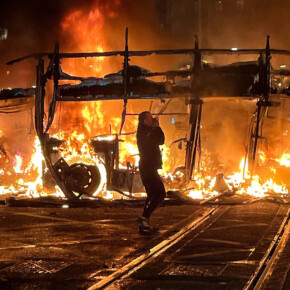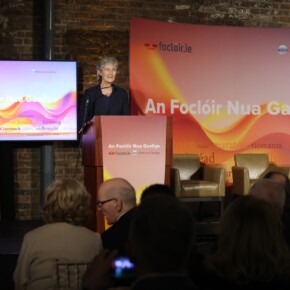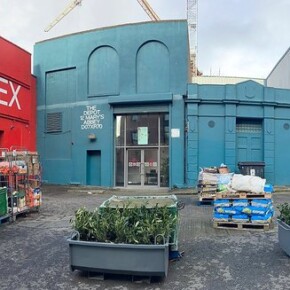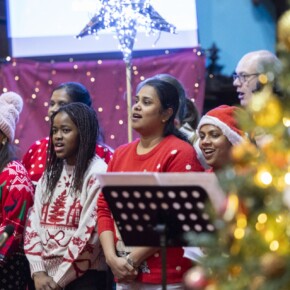Tackling poverty in Madagascar
Dublin People 23 Aug 2014WE HAVE covered the issue of recycling and survival in Madagascar, and it asks the question; what is being done to alleviate the poverty and suffering in that country?
Father Pedro is an Argentinean Catholic Priest who arrived on the shores of Madagascar in 1988 to take up an administrative post in the diocese of Antananarivo (Tana), the capital.
When he saw the plight of the poor living and working on the dumps of Tana he decided he wanted to be with them and to help them. Turning his back on what could have been a cushy life, in the past 25 years he has housed almost 28,000 people, most of them leaving a life eking out a living on the streets and in the dumps of Tana.
Akamasoa is the NGO that drives Fr Pedro’s initiatives. He established the Tana project, which now consists of three districts, Manantenasoa, Andralanitra and Mahatsara.
There are 11,500 school-going children in the various schools in the project. Each village in the project has a primary and secondary school. Manantenaso also hosts a High School, the Lycee Privee Grimaldi, sponsored by the Principality of Monaco, and a University.
Primary school fees vary from 5,000 to 10,000 Ariary (e1.75 to e3.50) per annum, depending on age. For Secondary school the fee varies from 12,000 to 15,000 Ariary per annum.
The fees for a regular private school elsewhere in Antananarivo are between 10,000 to 16,000 Ariary per month. Free meals are provided in the schools, with the exception of final year (Leaving Certificate equivalent) pupils, who go home for their lunch.
The project provides 1,000 kilos of rice per day as part of the school meal programme. There is a vegetable patch adjacent to the final year class, with the students taking turns attending to its maintenance and upkeep.
Facing the Lycee Grimaldi there is a football arena, and the project’s football team is in the Tana soccer league. There are billboards in the small stadium (which looked like a mini Richmond Park, home of the League of Ireland’s St Patrick’s Athletic) bearing testimony to financial support from the Governments of Spain, Morocco, Canada and also from UNICEF; unfortunately the support of Canada and UNICEF has now ceased.
There is a total staff complement of 460 (of which 80 per cent are female) working for Fr Pedro’s organisation, including teachers, teaching assistants, doctors, cleaners, cooks, gardeners, drivers and presidents of the various villages within the project.
Many of the employees grew up in the project and graduated from its schools. Some residents have found stable employment outside the Tana project, which today has a total population of 25,000.
The infants’ class at Manantenaso totals 130 children (64 boys and 66 girls) and all are in the four-to-five age bracket. Two teachers run the classroom, Mme Voahirana and Mme Domoina. Nearby are four other classes, for three and four-year-olds, and a kindergarten.
On the way into the project one passes a medical centre and a library. Opposite that is a shop for selling handcrafts produced by the local artistans.
In one of the craft workshops was Madame Esther, she had two children, a boy and a girl aged ten and two. She worked Monday to Friday from 8am until 11.30am and from 2pm to 4pm. She was working at embroidery, but did not specialise in any particular aspect of the workshop.
Her little daughter was asleep on a small sponge mattress beside her – as is common throughout Madagascar, staff can take their small children to the workplace.
Madame Chamine was sewing, putting the finishing touches to products; she has four children, three boys and two girls. Her grandchild was playing on the floor beside her.
Chamine’s daughter, the child’s mother, grew up in the project and is now a teacher in one of the primary schools. There is an Association of 90 women from the villages in the project who are engaged in the craft-making profession.
The sewing/embroidery workshop, which makes raffia jewellery and tablecloths along with a host of other products, employs 14 women.
Going into the higher years in the primary school, the classsrooms become brighter and more spacious, with nice desks and good chalboards.
Madame Aimee, Florine and Julienne were the teaching assistants to the first-year class of 55 children, headed by Madame Voangi.
The upper town in the project is where the University and Reception Centre are located. The project takes in orphan children, who after assimilation at the Reception Centre, presently housing 350 people, go to reside with members of staff, who become foster parents to the children.
After a period of education in such things as domestic, personal and food safety and hygiene, parenting, cooking and gardening, and on the rules and regulations and requirements of living in a residential community, people are given a house on the complex.
The length of stay depends on the capacity of the new entrants to settle into their new life, away from living rough on the streets of Antananarivo.
Families also have to agree to certain rules, like compulsory attendance at school by children, that both parents work and that the family attend church on Sundays.
Entering the Reception Centre, one passes the dormitory for single women and their children (if any). There were 16 single beds in this dormitory, with a locker separating every three beds.
Next was a dormitory for men, which contained 10 single beds, and there were six men in this room, who all looked retired and did not appear in the picture of health.
Some were resting, others were sleeping and the radio played music on the background. There was a second men’s dormitory beside that, which contained 10 single beds and a bunk-bed; there were some older men in this room resting.
Next to this is the women’s dormitory, where the orderliness, cleanliness and brightness gave an obvious contrast to the men’s dormitories. There were 24 single beds in this room and two double-beds.
On the bed, just inside the doorway, was a little boy eating rice. He had been found abandoned on a roadside with a little baby in his arms. His name was Nambinina and he was just 12-years-old.
From the Reception Centre we walked down to the house of Sabrina, who works in the project as a gardener. Her husband works as a house-builder, also in the project.
They have six children, four girls and two boys. One of her sons is married to an ex-Akany Avoko Childrens’ Home resident, Tafita, aged 17, and they have a one-year-old child.
They all live in the two-roomed home that is typical of a project house. One can only marvel at the fact that here in this small home with a well-kept small garden abutting a clean footpath and roadway, a family lives a dignified life, a world away from what undoubtedly could be precarious survival on the streets and dumps of Tana.
l Bernard and Marie Neary arrived back in Ireland in late June after three months volunteering in Madagascar. Their trip was entirely self-funded. Photographer Paul Kelly spent one week in Madagascar, capturing in film the daily life of the recyclers. His trip was funded by the Robert and Kezia Stanley Chapman Trust.











